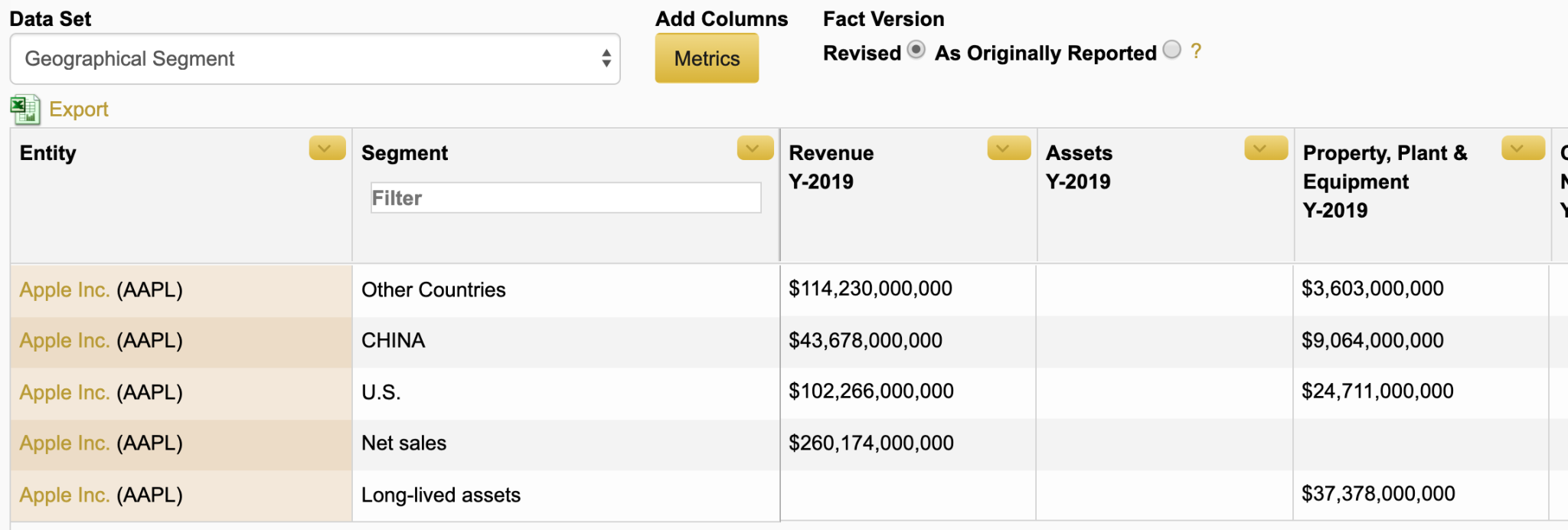Coronavirus is spreading rapidly in China and beyond, and by now you’ve probably seen specific companies announcing steps to curb their exposure to the threat.
For example, Disney ($DIS) has closed two theme parks in China; McDonald’s has closed numerous stores there. UBS, Alibaba, Novartis, and other businesses have told employees in China to work from home until further notice, and some have quarantined employees recently returned from China to their home countries. Nestle has stepped up biometric security at its factories in China. IMAX ($IMAX) has suspended the release of new films there.
You get the idea. Coronavirus is first and foremost a public health menace, and we wish the best to everyone fighting the disease. It is also causing real business disruption, as witnessed by Wall Street’s 454-point plunge in the Dow Jones Average on Monday.
So when will companies start disclosing more specific detail about their risks of coronavirus? Where can you get a sense of that exposure in financial data? Calcbench has a few ideas.
We have seen no disclosures yet that mention the word “coronavirus,” or even “flu” or “influenza” relating to this specific outbreak. That doesn’t mean they aren’t coming. On the contrary, they inevitably will arrive, probably within the next few weeks.
UPDATE: Well that changed quickly. Within 24 hours of us publishing this post, firms including Starbucks, Cirrus Logic, Las Vegas Sands, and others began citing coronavirus in their filings. So it is indeed an issue.
First, as always, use the Interactive Disclosures database to check for keywords — “coronavirus,” “influenza,” “Wuhan” or “outbreak,” for example. You can use the text-search field on the right-hand side of the screen to search for those words.
Most likely, coronavirus will appear in an earnings release, or in the Risk Factors or Management Discussion & Analysis sections of a 10-Q filing. You can use the pull-down menu on the left-hand side of your screen to search those specific disclosure sections, or just err on the side of caution and leave that part unselected, so you search the entire filing.
Second, set up Calcbench email alerts for companies you follow, so you can be notified immediately when a filing hits our database (usually within minutes of it arriving at the Securities & Exchange Commission). Then repeat Suggestion 1, above, to search the text of the filing for keywords related to coronavirus.
Not sure which firms have more operations in China than others? Then third, use the Segments & Breakouts page to search segment reporting specific to China. Use the “Geographic segment” option from the pull-down menu, and then type “China” or even just “CH” to filter results specific to China.
Figure 1, below, shows an example from Apple. We didn’t need to use the filter here because Apple only reports a handful of geographic segments, China among them. But if you were searching all the S&P 500, for example, you’d want to type in “China” as a filter.

A few caveats about searching geographic segment disclosure!
First, be creative with the filters you use and observant of the results you see. Companies might report “APAC ex. China” or “Far East” or “Mainland China” or “China ex. Hong Kong” — or whatever else they want, really. There are no specific rules in how to describe geographic segments. So look for designations that include China but don’t necessarily name China.
Second, you can measure exposure to China in several ways. Apple ($AAPL) shows both. Revenue numbers are (duh) the company’s sales in China, and it’s reasonable to believe that sales would suffer if Beijing orders 60 million people confined to quarters— which it has already done with its quarantine of Hubei province.
On the other hand, you can also measure a company’s China exposure by its PPE (property, plant, & equipment) there. That’s why manufacturers around the world might still be left reeling from coronavirus even if they have relatively small sales in China: their workers at all the PPE there might be off the job.
You can use Calcbench to assess and rank firms’ exposure to China by either metric.
Now we’re off to wash our hands and buy some surgical masks. Stay safe out there, this virus is no joke.